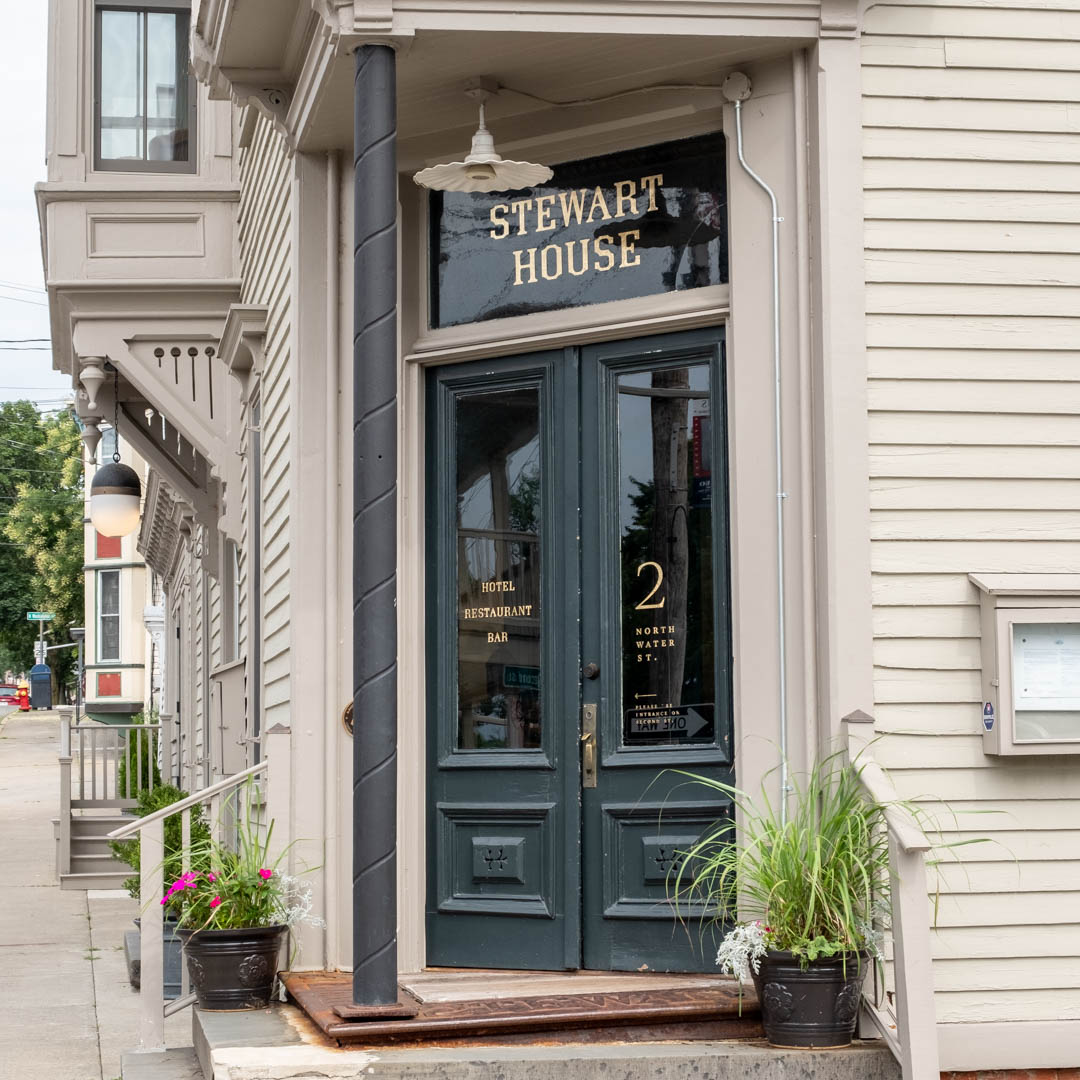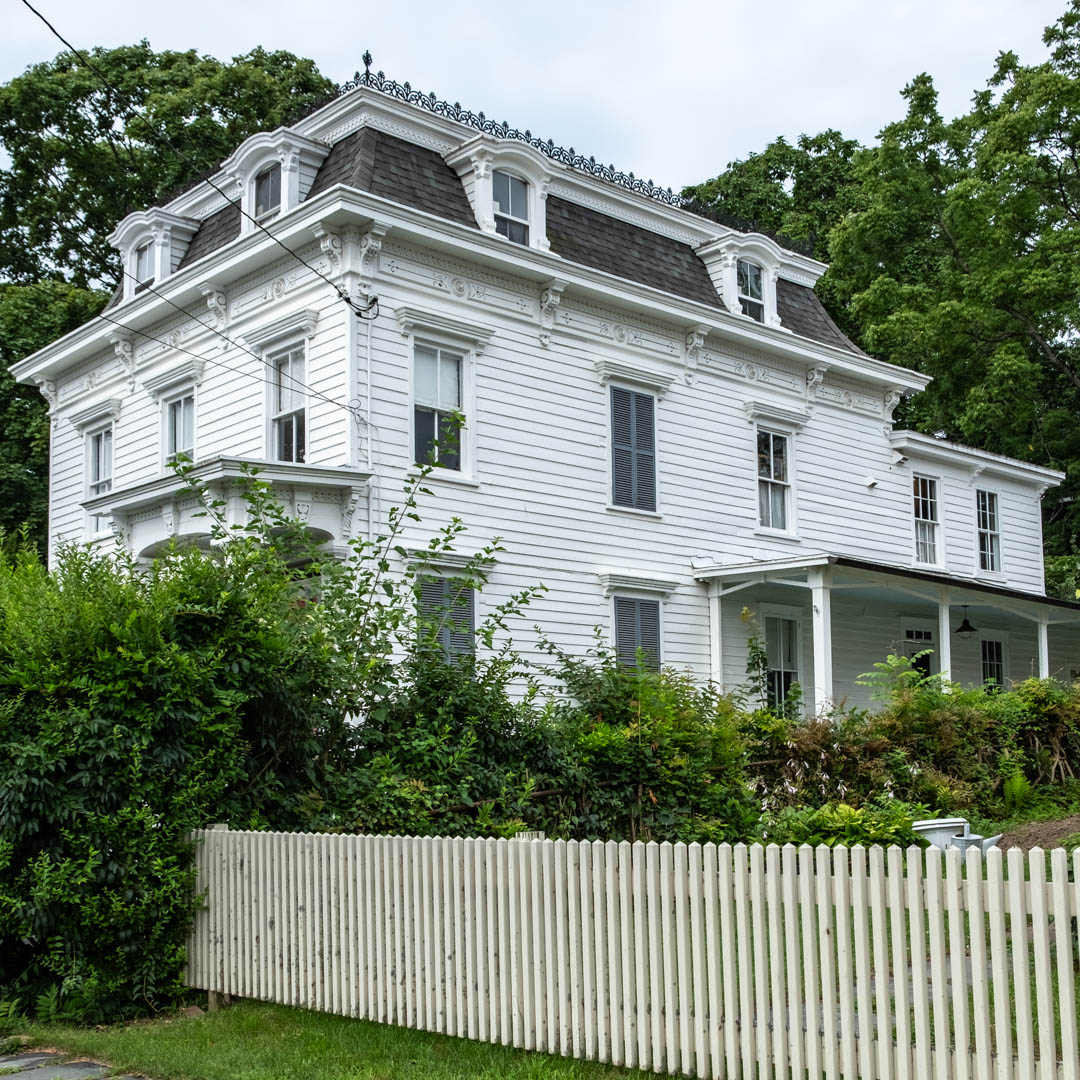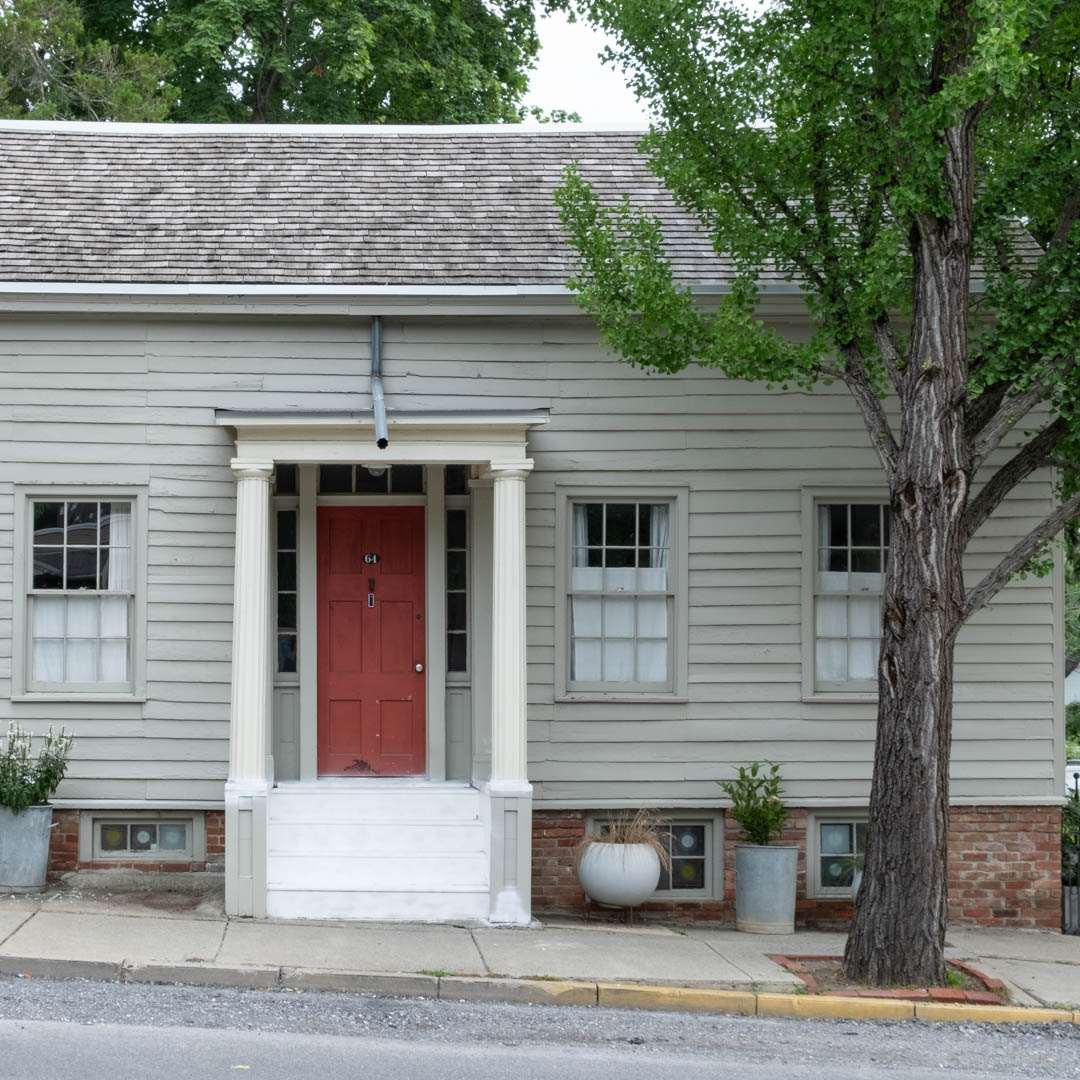THE STEWART HOUSE (Est. 1883)
Hotel / Restaurant (Dinner, Lunch Seasonally) Check Hours
In 1877, Athens was at the height of prosperity, when William and Ida Stewart purchased a plot on Water Street and began work on their new boarding house, which first welcomed guests in 1883. Simultaneously, the Stewarts started a family, having three children, tragically losing two of them at young ages. Their daughter, Harriet, or “Hattie”, was raised alongside the growing business. She become a keen business woman, taking over operations as an adult.
Hattie left behind many original documents including payroll sheets, the tab log, and hotel reservation lists. The occasional diary entry, post card, or love letter reveal that Hattie was likely more interested in the success of her business than fulfilling a traditional domestic role. Some records suggest she eventually married an Abram Post, though no evidence of a marriage license has been found. She is revered as the earliest suffragette in Athens.
As Hattie’s successful run came to an end, another young Athens couple was ready to take over. Bill & Marion Garbasz ushered in a new era for the property in 1949 when they re-established it as The Athens Hotel. Marion’s cooking put it on the map as an outstanding dining destination, and it was a haven for club meetings, milestone events and celebrations. Locals hold fond memories of the Garbasz days, which came to an end in 1986.
After more than 100 years in business, the property closed to the public but remained in the spotlight. Movie buffs will recognize the building from the 1988 film Ironweed, based on William Kennedy’s novel, starring Jack Nicolson and Meryl Streep. It can also be spotted in several scenes of Steven Spielberg’s War of the Worlds in 2005.
The new millennium brought several rounds of ownership changes and re-openings before The Stewart House landed in the hands of Lon and Lois Ballinger in late 2017. Entrepreneurs by nature, the Ballingers were at the helm of iconic Webster Hall in New York’s East Village for over thirty years. Lois recalls a love at first sight feeling on their first tour of the Athens property. She knew, along with the help of designer Tim Albright, they could restore it to its full, gorgeous and lively potential. In May of 2018, The Stewart House reopened once again – this time with a focus on elevated authentic style, subtle yet attentive hospitality, locally sourced food and quality live music.


